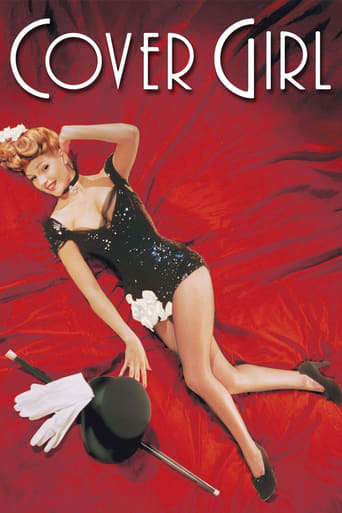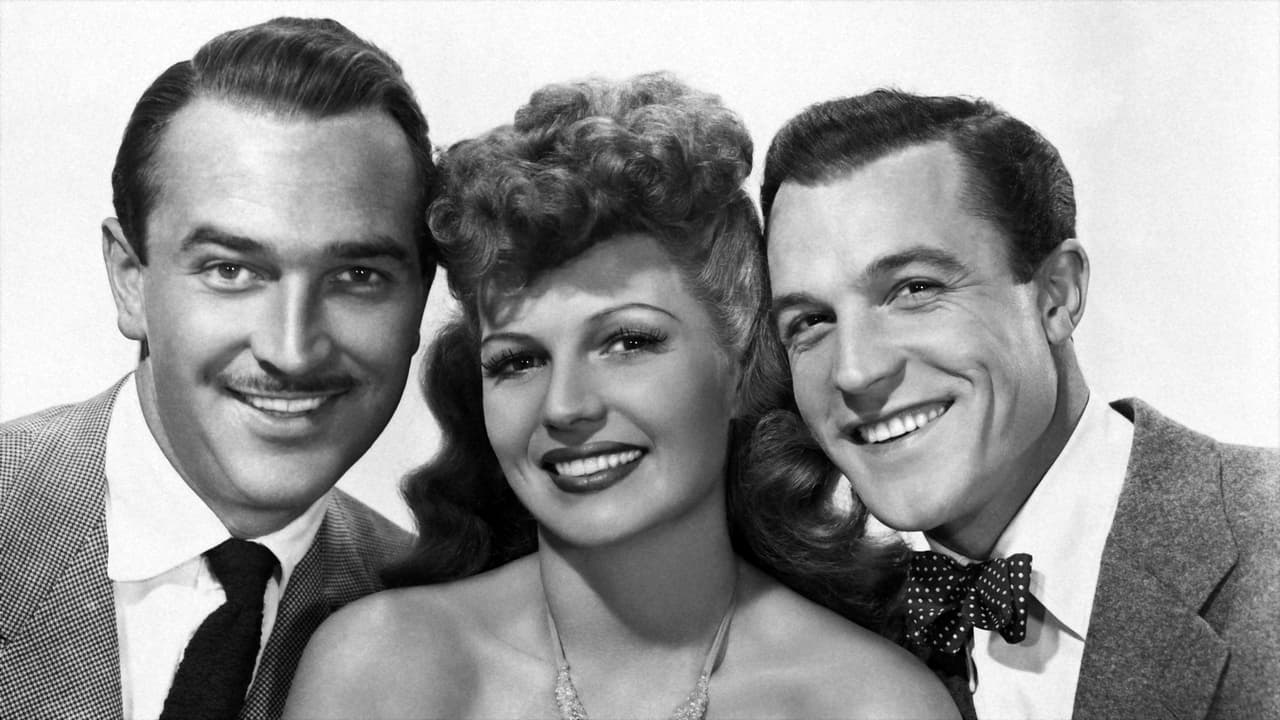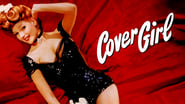Shirley Elizabeth Strang
I have seen this movie a few times always with pleasure.Rita Haworth & Gene Kelly were always entertaining. Also talking about gorgeous Rita has kindled a memory about my 3rd cousin Constance Worth (not her real name)who also appeared with Rita Haworth in the movie Angels Over Broadway. She was born in Sydney Enid Joyce Howarth known in Australia as Joycelyn Howarth the youngest of 3 daughters & her mother Mary Ellen Dumbrell married a Banker named Moffatt Howarth. This girl was the first Australian actress to find stardom in Hollywood.Our family is proud to be related.
gkeith_1
Spoilers. Observations. Opinions. A beautiful film. Beautiful Rita. Rita was the star. Wooden Kelly, but second banana. Third banana is Phil Silvers, who was a clumsy dancer at best. Sgt. Bilko, anyone? You Baby Boomers know who you are. Rita came from a family of professional stage dancers. She was remade for film, and here she shines in her seemingly effortless dance filmography. Her family was I think Mexican and/or Spanish. Her widow's peak hairline was altered, her hair was colored red and her last name Cansino was changed to the veddy-English-aristocratic-sounding Hayworth. Kelly was not handsome here. Sorry, Gene. Furthermore, his garish green and yellow dance costume hurt my eyes to look at it. Rita's accompanying chiffon pale yellow and green gown, with matching light green dance pumps, was just delightful, however. I love song and dance musicals. You know that. Here, I am still observing and critiquing places that I feel could use improvements -- and I give kudos in other places. I still give this film a 10, however. John Coudair, old and young, was portrayed by two handsome and distinguished actors. Rita as her grandmother was charming, especially in the Pearlies segment in which the poor young thing is rejected by her fiancé's snotty aristocratic mother. This non-MGM musical did not have the polish and snap that I am used to. The use of Technicolor is a real plus, however. Oh, how I hate black and white musicals even though some of them were very good. I figured, what the hey? Columbia made big bucks from the earlier It Happened One Night, so go ahead and splurge on Cover Girl.One more thing. Sidekicks. Phil Silvers and Eve Arden have no romantic attachments. They are asides, like wallpaper. Eve even has Stonewall for a character nickname. I know it goes with the character's last name of Jackson, but this seems pretty masculine if you ask me. Well, you didn't ask. At least Eve has some beautiful costuming and fancy hats in this film. She can play pool (billiards?) with the big boys.More Baby Boomer nostalgia. Our Miss Brooks' Eve Arden played zany characters in many earlier films before her famous 1950s TV show. Was she later in Grease?Rita wears flat gold dance shoes, to match her beautiful golden gown in the scene in which she runs down the ramp to meet tons of men. Were the men all that short in height? I was thinking. Short men. Was she taller? Was this to make her height stand out? They all then crouched down, in worship of her and to salute her as she floated past them, back up the ramp.
weezeralfalfa
My title(taken from a song made popular by a young Sinatra), refers to the choice Rusty(Rita) has as she walks down the aisle, still really undecided whether to marry young, handsome, but bland,5th Ave. theater owner Noel Wheaton and star in his shows, or to marry young, handsome, flashy, Danny McGuire(Kelly), and return to starring in his modest Brooklyn dinner plus show restaurant.She knows if she turns down Wheaton at the alter, she can forget about continuing to perform in his theater. She will have to go back to Danny, who will only be too glad to have her back.It's old Mr. John Coudair, owner of Vanity magazine, also her current employer, who once wooed and lost her dancer grandmother, who sways her opinion, telling her why her grandmother rejected his overtures.Well, you can guess what she does, at the last second.She explains her decision in front of all, and runs to Danny's place, where she finds Danny encoring 'their song':the memorable "Long Ago and Far Away" to himself, with just his friend 'Genius'(Silvers) present. She joins in the song, setting the stage for the joyous exit scene: an encore of the threesome's previous street romp to "Make Way for Tomorrow", reminding us somewhat of the "We're Off to See the Wizard" romp of Dorthy and friends down the yellow brick road. The theme of this film is the same as that of "The Wizard of Oz": Home is where the heart is, and you risk a life of eventual unhappiness if you stray too far.Like her grandmother, she decided she would likely feel out of place, and looked down upon by too many of Wheaton's relations and friends, as a former lower class Brooklyn show girl. As many other reviewers point out, there are also certain antecedent connections between this film and the later, much more praised, "Singing in the Rain". The several street dances, either by Kelly himself, or with his 2 friends, have some obvious similarities to to Kelly's famous "Singing in the Rain" street dance. However, none of them are an exact functional equivalent. Functionally, Kelly's famous "Alter Ego" street dance with his own ghostly image much more resembles his pantomime ballet in "On the Town", in which he expresses his frustration in the unexplained disappearance of his new found love: Miss Turnstiles.In "Alter Ego", Danny is expressing his frustration and mixed feelings about Rusty's apparent move to Wheaton's theater. In contrast, in "Singing in the Rain", Kelly is expressing his joy in a new found love. In this respect, that performance was functionally analogous to his later 'roller skating' routine in "It's Always Fair Weather" and to his solo "It's Almost Like Being in Love" ballet in Brigadoon. Functionally, the 2 episodes of the threesome performing "Make Way for Tomorrow" more resemble that of "Singing in the Rain", but even more closely resemble the "Good Morning" threesome episode in the latter film.Just as there were a couple of Kelly-O'Connor comedic dance skits in "Singing in the Rain", there is a Kelly-Silvers comedic song and dance in a moving army truck. True, Silvers didn't have near O'Connor's dancing skills, being primarily a comedian, but it was enough to get by. Silvers and Kelly would be reteamed 6 years later as a sometimes comedic pair, in "Summer Stock". In place of "O'Connor's classic "Make Em Laugh" acrobatic dance comedy, Silvers does a traditional comedic skit with several chorus girls, including Rita, to the tune of "Whose Complaining", which deals with the then current rationing of many supplies during WWII.Let's talk about Rita. Unfortunately,this is her only musical I have seen. She already had done two with Astaire. She plays 2 roles: that of Rusty of the present, and of her look-alike grandmother, Maribelle, in a couple of flashbacks. We first see her as part of a forgettable chorus girl act at Danny's. Later, she does 2 show numbers as Maribelle. The first has her in a horserace scene, singing the catchy "Sure Thing", in which she compares betting on horses with betting on her romantic connections. The second has her singing and dancing, sometimes with a male chorus, "Poor John", in reference to the romantic advances of a young John Coudair, who is in the audience. Her outfit and those of the men are strikingly colored in contrasts.As Rusty, she takes part in the "Make Way for Tomorrow " threesome street dances, and dances with Kelly in the Kelly-dominated "Put Me to the Test" show number. This is her most challenging number, and is followed by her romantic duet with Kelly: "Long Ago and Far Away". As part of her discovery of Wheaton's theater, she does a brief dance with her classic flowing wardrobe. She gets a similar chance in her unique number, to the tune of "Cover Girl", in which she emerges from a cloud in a long golden flowing dress, to run down a long winding ramp, to dance with a bevy of men, before disappearing again up the ramp. This is the Rita we will most remember from this film. It would have made a fitting ending for the film, but that would have left her relationships with Danny and Wheaton unresolved. In summary, you may agree with many who see this as a 'poor man's "Singing in the Rain". But, if you have some liking for Rita and Gene, and are not put off by Silver's or Eve Arden's brand of comedy, I think you will find this is a generally entertaining, if more traditional, musical, from an earlier era, and a non-MGM studio.
Richard Burin
Cover Girl (Charles Vidor, 1944) is worth it for the dancing - much of it choreographed by co-star Gene Kelly, in just his fourth musical. Rita Hayworth is a stage-star who spies a path to the big-time via a magazine beauty competition. Though she gets the gig, thanks to the sentimentality of a big shot who once dated her grandmother, it puts a strain on her relationship with boyfriend and former boss Kelly. That hackneyed but involving plot, which borrows from the Jessie Matthews musical Evergreen, is a springboard for some very interesting routines. The lovely Make Way for Tomorrow sees Hayworth, Kelly and comic foil Phil Silvers dashing around a vast set, arm-in-arm, while the ebullient Put Me to the Test is an energetic stage-set number teaming Gene with a succession of partners. The absolute highlight is Kelly's Alter-Ego Dance, in which he hoofs opposite a transparent version of himself. Until you've seen the screen's second greatest dancer leap over his own head, you haven't really lived. Elsewhere, the staging is just peculiar. During the title number, Hayworth descends the biggest staircase this side of The Great Ziegfeld. When she gets to the bottom, she just sort of waves her arms around a bit. I take it Kelly didn't devise that dance. Poor John, dubbed by Martha Mears, as were all Hayworth's numbers, features the oddest (Cockney?!) accent I've ever heard. The choreography and costumes are almost as weird.Cover Girl is too spotty and muddled to be ranked with the best musicals of the period, but it's a valuable snapshot of one of cinema's greatest creative forces at an important stage in his career. In the film's key numbers, Kelly's sense of ambition is already much in evidence - though it was only once he was given bigger budgets and more significant talents to work with that he really came into his own. Even so, he reportedly cited the Alter-Ego Dance as the most difficult routine he'd ever crafted, and it is a phenomenal achievement*. Hayworth, who Fred Astaire regarded as the best of his own partners, is good value in the lead, and displays a depth of emotion that transcends the slightly stale script, while Phil Silvers and especially Eve Arden provide exemplary comic support. Silvers - later TV's Sgt Ernie Bilko, of course - even does a couple of song-and-dance bits.*Trivia note: Fred Astaire would offer his own variation on the routine two years later - Puttin' on the Ritz - backed by no fewer than nine Astaires. The way Kelly and Astaire pushed one another to ever greater heights during this period is exhilarating.



 AD
AD




